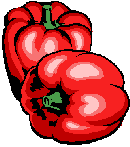|

Also call: Shu yu
 | DESCRIPTION
|
An edible root which has a rough papery thick skin.
The Yam is similar to a Sweet Potato and Taro, and the flesh are flowery.
 | HISTORY AND ORIGIN
|
Some varieties are thought to be native to Central America
and it has been eaten as a staple by peasant in China since its early
history.
 | BUYING AND STORAGE
|
Choose firm and undamaged Yam, avoid wetness and
softness. Store as the Potato.
 | PREPARATION AND USE
|
Remove the outer bark, can be boil, mash, roasted and
chipped. Use in desserts, soups, chinese cakes and Asian dishes.
 | NUTRITIONAL INFORMATION
|
An excellent source of vitamin C and potassium and high in
carbohydrate.
 | MAJOR NUTRIENTS |
-
-
SERVING SIZE: 100 grm
-
| * ENERGY: |
560 |
kj |
* IRON: |
.3 |
mg |
| * PROTEIN: |
2 |
grm |
* POTASSIUM: |
500 |
mg |
| * FAT: |
|
grm |
* CALCIUM: |
|
grm |
| * CARBOHYDRATE: |
32 |
grm |
* VITAMIN A: |
|
ug |
| * DIETARY FIBRE: |
4 |
grm |
* VITAMIN B: |
|
mg |
| * SODIUM: |
|
mg |
* VITAMIN C: |
10 |
mg |
 | VARIETY
|
MOUNTAIN YAM: Also called Nago
imo, Yama no imo. A beige colour, hairy Japanese fruit
vegetable. It has a irregular form spear-liked shapes and has a gluey
texture flesh.
COMMON: Has a rough papery thick
skin, pinkish brown skin.
|




